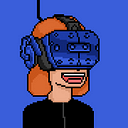Post-Pandemic Hygiene Tech a Rising Market With Big Opportunities
The COVID-19 pandemic changed the economic and social panorama and forced the tech industry to shift its focus. This opened the game to a new generation of trends centered around hygiene, such as self-cleaning surfaces, UVC appliances, and haptic solutions.
Hygiene experts have become a tribe much sought after. Companies are hiring hygiene engineers while institutes and universities have begun to offer a new variety of related courses.
An estimated 37,000 deaths could be prevented annually by inhibiting the contamination of surfaces such as doorknobs or surgical tables. In consequence, self-cleaning products and anti-bacterial surfaces are becoming big investment opportunities.
We still have a long road ahead before we come out of the COVID-19 era. However, the pandemic has given the market new opportunities for innovation. Ultraviolet capabilities are now being introduced on appliances, and completely new technologies like hygiene haptics promise mid-air interaction.
Self-Cleaning and Anti-Viral products
We might soon be seeing COVID-19 resistant doorknobs and handrails in shopping centers and metro stations around the world.
A company called NitroPep has created a protective coating that can neutralize viruses and bacteria on contact, in seconds, by bonding antimicrobial agents to metals and plastics. That’s a considerable improvement compared to the 2 to 6 six hours it might take for an infected surface to self-clean.
Unfinished wood, stainless steel, and soft stone can be breeding grounds for germs and bacteria. Self-cleaning furniture uses a polymer infused with titanium dioxide. When exposed to sunlight, it triggers a chemical reaction that kills both. Advances in antimicrobial technologies could make office furniture manufacturers be able to offer a wide range of self-preserving products.
Some of these solutions could be made available as early as before Christmas. The antimicrobial coatings market is worth, today, around $3.2 billion globally. This number is likely to increase after COVID-19.
Ultraviolet Appliances
Ultraviolet light can kill viruses and bacteria. Several gadgets and bigger appliances are now beginning to include built-in ultraviolet light modes.
For example, Daan Tech’s mini-dishwasher has incorporated a UVC light-powered sterilization mode. The ultra-compact dishwasher also consumes only 0.35kWh and uses less than 3 liters of water per cycle.
In China, whole buses are being cleaned with ultraviolet light every night, while UVC-emitting robots roam the floors of hospitals disinfecting surfaces. Some portable household appliances like sterilization sticks have been proven effective against bacteria in mobile phones, keyboards, toys, and toothbrushes.
UV equipment suppliers have seen a record in sales this year. However, it’s worth noting that UV shouldn’t be used to sterilize hands or any part of the skin because it can produce burns within seconds. Luckily, scientists are working on a new type of UVC that is less dangerous to handle yet lethal to viruses and bacteria. Short-wave UVC has shown to not change the DNA of living human skin cells, although it’s not currently used in any products yet.
Hygiene Haptics
Investment in touch technologies had been growing before the onset of COVID-19. The market is projected to grow to $41 billion by 2027, with companies like Apple, Sony, Microsoft, Facebook, and Disney all working on new haptic products.
Hygiene haptics can be particularly useful for hospital environments, where staff can’t operate touchscreens with wet or gloved hands. This year, Austria XeelTech presented a haptic controller that could be combined with disposable covers for doorknobs in antibacterial materials. Filled with a fluid containing magnetizable iron particles, the device can change its viscosity to change how it feels.
Several people have expressed concerns over touchscreen hygiene. UK’s company Ultraleap saw the changes caused by the pandemic as an opportunity to push the development of existing technology forward. Their hands-free haptic device uses ultrasound to produce mid-air haptic feedback.
The company recently announced that they were partnering with cinema company CEN to equip theatre advertising displays with touchless haptics. These displays would “limit the spread of germs and provide safe and natural interaction with content.”
A Post-Pandemic Panorama
Most of the innovations mentioned above are related somehow with touch — whether it’s about making sure it’s safe or finding hands-free ways of interacting with objects.
These days, interactions that require proximity are becoming increasingly more mediated. For example, hospitals and essential retailers, such as grocery stores, were the first to introduce plexiglass screens. Now restaurants, schools, airports, and even massage parlors have done the same, showing how mundane interventions can sometimes make the biggest impact. These low-cost panels are reversible and don’t require customers to change their behavior.
Circumstances can change quickly, but social change takes longer. In the coming years, we’ll probably see an increase in motion-detecting sliding doors, self-sanitizing surfaces, and a new generation of haptic gadgets that can be used mid-air.
This is why it’s important to define the meaning we want to give to touch and find solutions that make sense from both technological and human points of view.
If (or when) COVID-19 or a similar virus returns, we should consider how hygiene tech can make sure we’re not adding unnecessary distances, but rather allowing people to feel connected again.
This article was originally published in Startup Savant on October 28, 2020. Link: https://startupsavant.com/news/hygeine-tech
